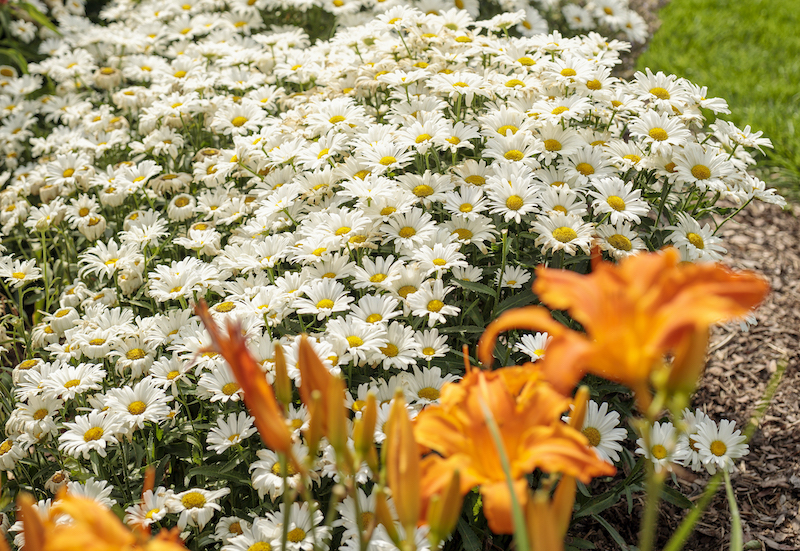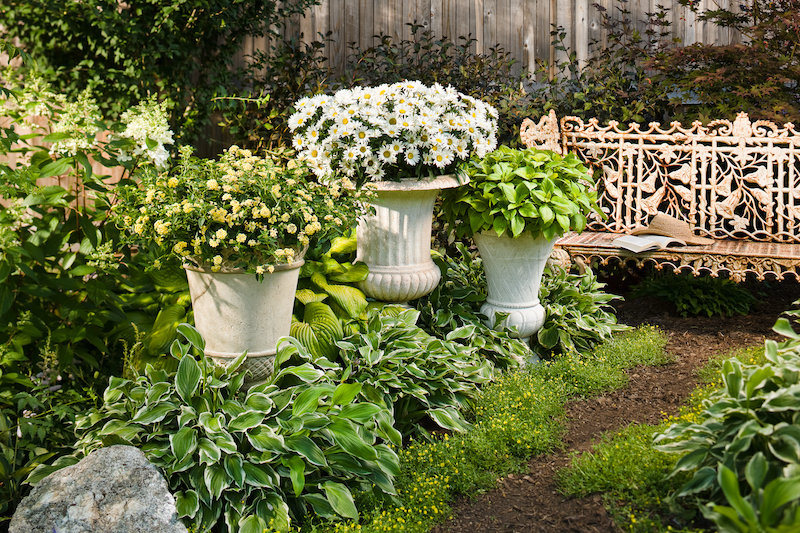Growing Shasta Daisy
Shasta Daisies are hardy hybrids of Oxeye Daisies and Portuguese Field Daisies that are disease resistant and known for their striking good looks. These daisy cultivars are available in a range of colors and both single- and double-petal versions. The petals surround bright yellow centers and are held up on sturdy stems. Pollinators are drawn to the lovely flowers. Mature plants can stand 9 inches tall or 3 feet tall, depending on the cultivar. Most Shasta Daisy varieties grow as a perennial in zones 5 through 9.

Planting Shasta Daisy
Shasta Daisies can handle varying conditions but need full to partial sun. The soil must be well drained because Shasta Daisies do not tolerate standing water. Plant Shasta Daisies in the spring after there is no longer a chance of frost. These plants are short-lived perennials and typically only last for a few growing seasons. Plant new Shasta Daisies as needed to replace older plants and maintain a full bed.
Watering Shasta Daisy
Give Shasta Daisy plants about one inch of water per week. These flowering perennials appreciate damp conditions, so water when the top couple of inches of soil feel dry. Established plants are more drought tolerant and can handle dry conditions, but water helps the plant bloom better.
Fertilizing Shasta Daisy
Rich soil can support the growth of Shasta Daisy plants. Amend the soil with organic compost when planting. Top-dress the soil with rich compost each spring. Apply a slow-release fertilizer in the spring or a balanced fertilizer each month during the growing season.

Pruning Shasta Daisy
Deadhead Shasta Daisies to encourage more blooms and keep the plant looking neat. Removing spent flowers redirects energy into new growth but ensures the flowers do not go to seed. Some gardeners choose to leave at least some of the flowers in place to self-seed and generate new plants. Cut the growth back to ground level after the first frost.
Caring For Shasta Daisy in Pots
Potted Shasta Daisy plants are perfect for adorning decks, balconies, and porches. Grow 1 to 2 plants in a 12-inch container. The pot can be made from any material, but the container must have sufficient drainage. Plants in containers need water more often, so plan to water when the top couple inches of soil are dry. Fertilize container-grown Shasta Daisy plants monthly using balanced, water-soluble plant food.

Winter Care for Shasta Daisy
Plants grown in areas with mild winter weather do not require additional winter care. The greenery will stay in place and offer some winter color. Regions with cold winter weather will need to be trimmed back. The vegetation will wilt after the first frost, and the growth can be cut back to ground level.
Have a question about Shasta Daisy? Fill out the form below and we will try and get back to your question as soon as possible. We may even feature your question in this article to help other gardeners!
 |
Author Alison Cotsonas - Published 01-29-2023 |
